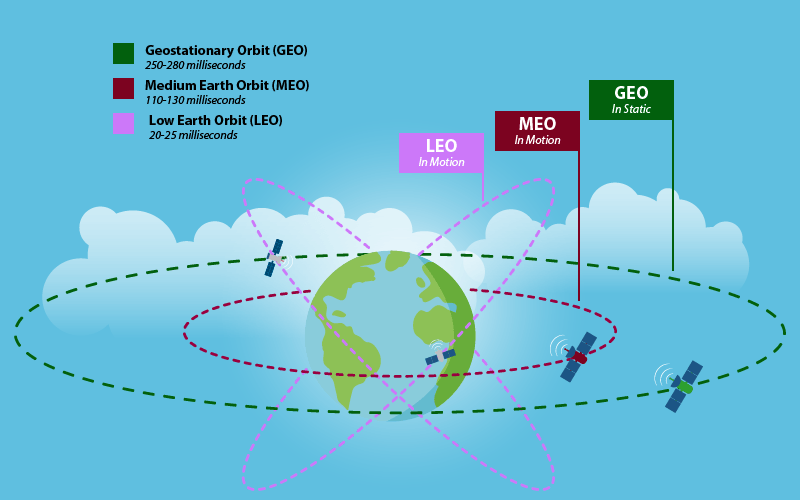




Disclaimer: Copyright infringement not intended.
Context
of GEO (geostationary equatorial orbit) and MEO (medium earth orbit) satellite constellations.
|
Satellite feature |
GEO( satellite |
MEO satellite |
LEO satellite |
|
Full form |
Geostationary Earth Orbit satellite |
Medium Earth Orbit Satellite |
Low Earth Orbit Satellite |
|
Orbital period |
24 hours |
2 to 8 hours |
10 to 40 minutes |
|
Satellite height |
35,800 km |
5000 to 12000 km |
500 to 1500 km |
|
Satellite life |
Long |
Long |
Short |
|
Propagation loss |
Highest |
high |
least |
|
Number of satellites |
3 |
8 to 20 |
40 to 80 |
|
Advantages |
Covers large geographical area, Only three GEO satellites are needed to cover earth. |
With MEO satellite lesser number of satellite network required compared to LEO satellite to cover the area. |
LEO satellite provides better signal strength. |
|
Disadvantages |
Considerable time delay in the signal, which is not favourable for point to point communication. |
Weaker signal compared to LEO since it is higher orbit than LEO |
A very large number of satellites network is required, thus it is very costly |







© 2025 iasgyan. All right reserved